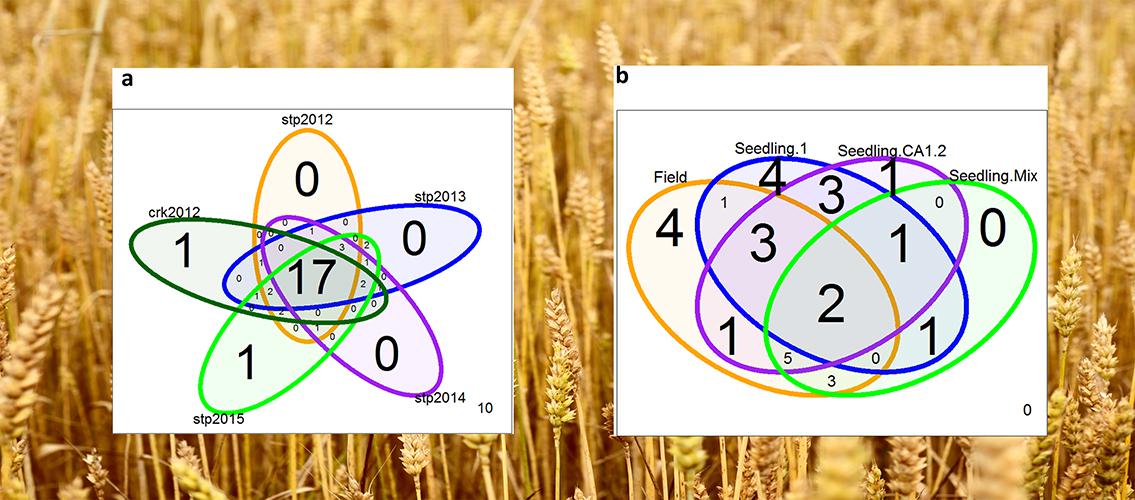
Wheat leaf rust is a fungus (Puccinia triticina) that attacks wheat and other cereal crops. It is common and destructive, affecting crops throughout the world. Researchers are studying the genetics of these crops with a goal of producing more rust-resistant cultivars.
MSI Principal Investigators James Kolmer and James Anderson were co-authors on recent research published in PLoS One that used a genome-wide association study (GWAS) approach to identify resistance genes or quantitative trait loci (QTLs) in over 300 spring wheat breeding lines. This was one of the first studies to use wheat lines that have been genotyped with the high-density iSelect 90K SNP array. The researchers were attempting to validate some known genomic loci that confer resistance, as well as identify new ones. The study involved both seedlings and adult plants, so the researchers could identify similarities and differences in these two groups. They found that many lines contain multiple resistance genes or QTLs for leaf rust resistance, and identified some new QTLs. Results from this research project and ongoing research in both the Kolmer and Anderson labs may lead to crop lines with better resistance to leaf rust.
The paper can be found on the PLoS One website (L Gao, MK Turner, S Cahwo, J Kolmer, JA Anderson. 2016. Genome-Wide Association Study of Seedling and Adult Plant Leaf Rust Resistance in Elite Spring Wheat Breeding Lines. PLoS One 11(2): e0148671. DOI: 10.1371/journal.pone.0148671. James Kolmer is an adjunct professor in the Department of Plant Pathology and a researcher at the USDA-ARS Cereal Disease Lab in St. Paul, Minnesota. James Anderson is a professor in the Department of Agronomy and Plant Genetics. Lead author Liangliang Gao is a researcher in Professor Anderson's MSI group.
Image description: Venn diagrams (a) Overlap between QTLs under different field environments. (b) Overlap between field and seedling QTLs. Image and description, L Gao, et al. PLoS One 11(2): e0148671.
posted on June 22, 2016